Rollup, Appchain & the Multichain Thesis-How Chain Abstraction Ties It All
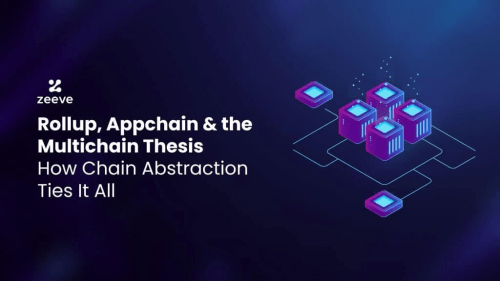
In the midst of multiple rollups and appchains that are functional now, there’s the need to make them not look like separate ecosystems but ideally a one-chain environment for all. In this pursuit, so far, around $436M have been raised to make that happen through a technological breakthrough. That breakthrough is termed as chain abstraction.
What exactly is Chain Abstraction?
In order to understand chain abstraction, you need to first recall some of your past experiences. For example, a token/nft buying experience. Has it ever occurred to you that what if I didn’t have to create that new wallet for that NFT/ token or choose that specific blockchain and understand the intricacies of that blockchain before making a transaction. If it has ever happened to you, it is because blockchains are not lego blocks but separate puzzles to solve.
Chain abstraction on rollups/appchains resolves this by making any ecosystem native to its users/developers. Hence, you don’t need separate wallets, gas tokens or any other thing to operate on top of every blockchain, rather, through chain abstraction, you literally feel like dwelling on a single environment, even though you are not.
Why Do We Need Chain Abstraction When Interoperability Already Exists?
After reading the above section, you would think that the concept of chain abstraction mirrors interoperability. But such is not the case, interoperability doesn’t solve the problem of homogeneity of the blockchains for interconnectedness that chain abstraction on rollups/appchains does. The end result: UX improves by leaps and bounds. How?
For example, if you need to send your crypto from an Ethereum chain to a Solana chain, you can very well use the interoperability bridges for the same while using an interoperability layer.
But for that matter, you need to create a bridge account to lock tokens on the source chain and mint tokens on the destination chain. That’s a lot of dent done to the UX for a new user or even a seasoned pro. Hence, there are multiple boxes unticked by interoperability obstructing mainstream blockchain adoption that chain abstraction ticks.
What Are the Boxes Chain Abstraction Ticks That Interoperability Couldn’t?
Single Chain App Limitation
On an interoperable blockchain, you need to create multiple wallets, accounts and interfaces that you might need for supporting the applications when they interact with different networks. As a result, it becomes a lot of work for the developers to perfect communication for every dapp that they develop, or risk fragmenting their liquidity. While doing this, the developers have to build every single time they are thinking of a new use-cases or specific features that they wish to integrate in their application. However, chain abstraction on rollups/appchains opens the door for developers to multi ecosystems. As a result, they can access multiple environments without having to code separately for each chain.
Complex UX, Lack of App Discovery and fragmented liquidity
We have always said that interoperability is solving the problem of liquidity but is it even real. Why did we say that? For example, while using bridges for interaction with different blockchains, you lock a token on the source chain and mint a respective native token on the destination chain. This process does make the native token function on one chain and the other token locked on a separate chain. Imagine, if every liquidity provider is doing the same. It will completely deprive one chain of liquidity. Sounds more like a vampire attack sucking liquidity, but can’t help, because you love interoperability so much.

At the same time, it results in a lot of work that the developers have to do if they ideally want to make all ecosystems stand unified with respect to liquidity and positive user experience. Which means, building a lot of consistent tooling, APIs, and SDKs across chains, increasing development time and maintenance costs for streamlining the above process. And the end result, every ecosystem indulging in a vampire attack. Chain Abstraction on rollups/appchains solves this by providing one unified interface that solves fragmentation issues, DevEX and even simplifies the UX.
Easing the Cognitive Load
Interoperability unnecessarily creates a lot of cognitive load on the users because they have to create and maintain multiple wallets and private keys. Due to this problem, the users are at a far greater risk to commit mistakes because they have to remember multiple seed phrases, private keys and other operational rules imposed on them. Due to this, there’s a high chance that the user would choose to opt out. But chain abstraction on rollups/appchains solves this by creating a seamless, unified experience across multiple blockchains.
Better economic opportunities and applications
When you are building an interoperability ecosystem, instead of focussing on improving the entire ecosystem, you would be more stressed out at improving your ecosystem for better outcomes. That’s the problem with interoperability protocols. They are the best solutions for their own ecosystems but not for everyone. However, users want better ways to maximize their opportunities across a larger web3 spectrum.
Interoperability seemingly makes the operations complex and has very little to do about uplifting the user experience and improving the app experience. That’s why when you speak of revolutionizing the financial space with DeFi and you are banking on interoperability to help users experience cross-chain yield farming, trading, or gaming. That’s like expecting that everyone has the IQ level of Einstein or Edison. Or, everyone is such a damn fan of solving puzzles. On the contrary, they want a happy and simple blockchain user experience that chain abstraction on rollups/appchains promise
What Tools Chain Abstraction On Rollups/Appchains Uses To Tick Those Boxes?
Chain abstraction uses a 5 layer model to tick the boxes that interoperability has left;
1- The Abstraction Layer: The soul of everything
Let’s explain the abstraction layer through a movie scene. In the movie Lord of the Rings: The Two Towers. The towers were responsible for looking at anything that happened in Middle Earth. Likewise, the abstraction layer creates the same type of magic. It is like a separate autonomous blockchain watch tower that controls all other blockchains through smart contracts. These smart-contracts act as intermediaries/watch towers to communicate with all other blockchains that are connected to the abstraction layer. Hence, these smart-contracts act as translators that translate any other language of other blockchains to the language that the target blockchain understands. In this way, it makes communication brisk and effective.
2- Messaging Protocol: The Harbingers
They have a reason to be named as the harbingers because they pass on messages from different blockchains to the abstraction layers.
3- Middleware: The Bridge
These are the bridge to different blockchains performing a suite of tasks like relaying. In relaying, they use the off-chain services to track whatever is happening on the abstraction layer, and subsequently, they pass on the message to the appropriate blockchain for change of state. Followed by this, the validators of the middleware will validate for the proposal and trigger a state change based on consensus. And lastly, the wormhole will convey whatever has happened through a generic message passing system to ensure that everything that is occurring on top of the abstraction layer has been duly intimidated to the target blockchains and the results have been subsequently relayed back to the abstraction layer.
4- Generic Process: The constituents of chain abstraction
The fourth layer comprises generic processes like understanding the user interaction, request translation, messaging relays, transaction execution, confirmation relay and UI update.
5- Intent Based Architecture: The preemptive Engine
The last layer is an intent based transaction that preempts the user’s behavior and performs the function. So, instead of the user putting in all the data in a transaction to get it executed, the intent layers preempt the user’s choice and perform the computation. For example, instead of writing, convert NFT A to NFT B on D market places for best prices. The intent based relayers will simply abstract the message intent by putting in the following message: convert NFT B to NFT A for best prices.
How Different Solution Providers are Proceeding with Chain Abstraction?
Near Protocol: Cross Chain Level Communication
Near protocol is using chain signatures. Where, any activity which is occurring on one chain is subsequently passed to another chain through a MPC/chain signature. In this pursuit, the abstraction layer plays a crucial role identifying MPC computation through the smart contract and conveying the same to the target and the destination chain for execution.
Particle Network: At the Account Level
Particle Network uses a universal account for chain abstraction on rollups/appchains. In the universal account set-up, the user will be allocated a single smart-contract wallet that they can use across different blockchains. So, they need not have to do manual bridging while interacting with different blockchains.
XION: For Protocol Level Communication
XION uses generalized abstraction where the XION chain abstracts protocol-level account communication, signature and gas. Due to this, it is possible to create Meta accounts on Xion that helps simplify user login processes, enable advanced account management, and facilitate interactions using smart contract capabilities instead of traditional wallet systems. Hence, making users interact with different blockchain applications using Web 2 access interfaces like emails and biometrics.
Everclear: Interchain Liquidity Settlements
It is very hard to clear liquidity requests involving two different chains when there is the need to establish perfect coordination among solvers, cross-chain bridges, and protocols through two-way liquidity purification and fund rebalancing. Everclear abstracts this by including a bonding mechanism that abstracts the need to lock tokens for transfer to other blockchains. In this way, it makes settlements fast and cheap because all the solvers, cross-chain bridges, and protocols earn through this bonding mechanism solved by EverClear through its chain abstraction on rollups/appchains.
Okto: Unifying a One Chain Ecosystem
Okto chain introduces a revolutionary method through its orchestration layer to abstract both the user and the developer experience on rollups/appchains. So, developers need not have to be bothered about the technology stack due to the orchestration layer because it standardizes any language into an understandable chain-native language. At the same time, the users can simply login to any Web 3 app with just their social logins. And at the same time, there’s paymaster that abstracts the gas to make the user experience akin to Web 2. Hence, Okto through its chain abstraction on rollups/appchains help in creating a one ecosystem for all the applications to communicate and settle transactions.
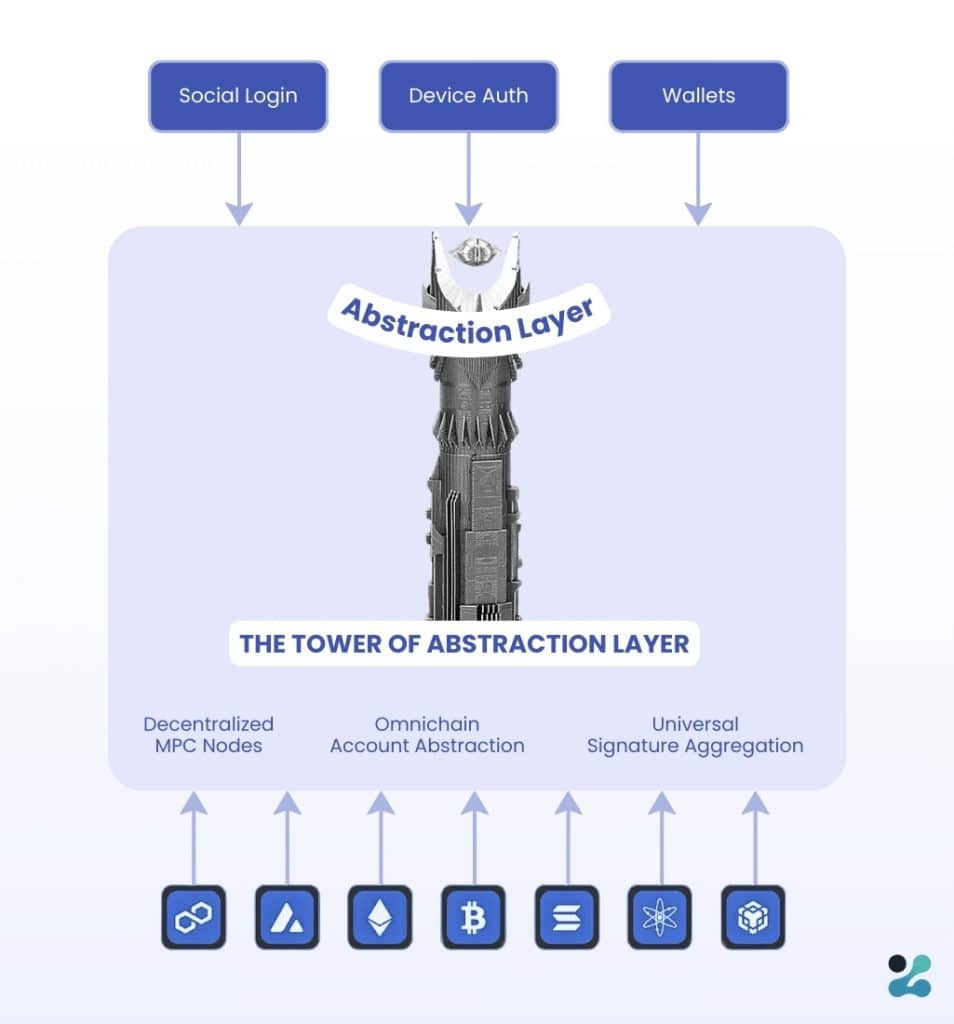
Launch Your Abstracted L2/L3 Chain With Zeeve
Zeeve’s Rollups-as-a-Service and appchain infrastructure takes away all the pain of launching your own custom abstracted L2/L3 chain with chain abstraction features in it. You can go for a low code deployment sandbox and launch an OP Stack, Arbitrum Orbit, ZKsync Elastic chains, Tezos Smart rollups, Parachains, Avalanche L1s (Formerly known as Subnets), in just a few clicks.
Integrate Particle Network, Near, Okto and other leading chain abstraction tools and protocols on-demand on rollups/appchains at the time of deployment or later.
Whether you are planning to launch your own abstracted L1/L2 chain or you want to migrate to a rollup/appchain based ecosystem, we are there to help you in all your endeavors. The least that you need to do is send us an email or schedule a call with us and we shall be eager to help you.



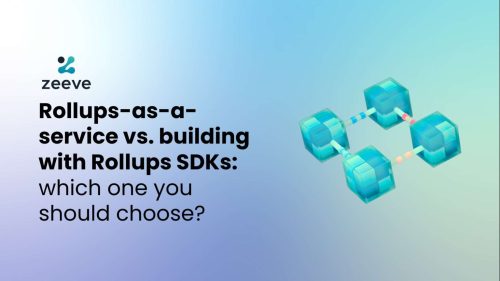
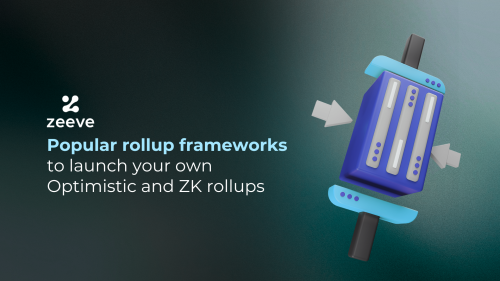
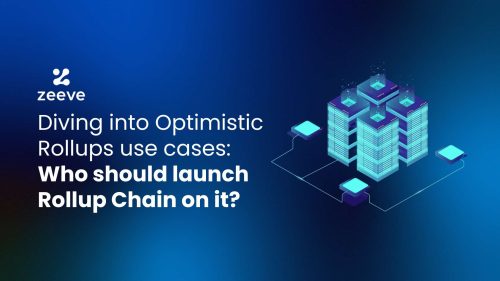
Responses